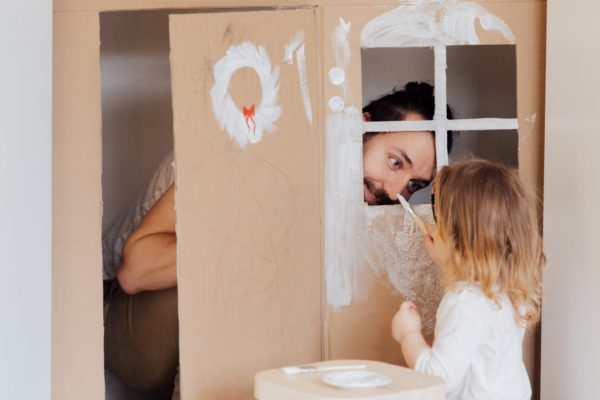As we explained in the previous article a passive house and the Passivhaus certificate. Passive houses use the basic principles of bioclimatic architecture combined with high energy efficiency.
Maximum use is made of solar radiation and light with very high thermal insulation, good air tightness and mechanical air renewal by means of a double-flow ventilation system with heat recovery and air filters.
BASIC PRINCIPLES OF PASSIVE HOUSES
Bioclimatic design
In the design of the house it will be necessary to take into account the climate, the orientation, the shape, the capture of solar radiation in winter and its protection in summer by means of blinds, awnings, adjustable louvers and trees. Construction of Trombe walls, application of geothermal energy and, in general, maximum use of natural resources.
2.- Building envelope with a high degree of thermal insulation.
The idea is to insulate the building as if it were a thermos flask, where heat and cold are maintained with minimum energy losses.
Excellent insulation with low transmittance materials should be used to reduce heat loss in winter or gain in summer and consequently reduce energy demand for air conditioning.
3.- Eliminate thermal bridges
Thermal bridges are weak points in the building envelope through which heat is lost. They occur where different materials meet, such as at the junction of aluminum windows and glass.
4.- Airtightness
We have to achieve maximum airtightness to prevent the passage of unwanted air infiltration, which is responsible for almost half of the energy loss. Doors, windows and installation passages are the points to be taken into account. A good airtightness will protect the building against the appearance of humidity, preventing the passage of cold air in winter, which is responsible for condensation humidity. An airtight house will improve your insulation from outside noise.
It is essential to control air infiltration in the home to ensure that the air introduced is of good quality, fresh, clean and free of impurities and with adequate temperature and humidity characteristics. A relative humidity outside the recommended range (40-60%), negatively affects our well-being and health.
5.- Quality carpentry
It is essential to use carpentry that guarantees maximum airtightness and thermal insulation to reduce energy losses as much as possible.
Windows are the weakest element of the building envelope, they are responsible for 25-30% of the heating consumption, not to mention the entrance doors to the house.
We will have to use double seals, double or triple glazing, low emissivity, to integrate noble gases in their air chambers.
Double flow controlled mechanical ventilation with heat recovery and air filters.
To achieve maximum energy efficiency we have to design a building that is completely airtight and very well insulated. It will have to be properly ventilated, avoiding “throwing out the window” part of the energy consumed to heat or cool its spaces; introducing polluted air (traffic, industry, pollen, etc.) or noise from the street. The opening of windows for a period of time does not ensure continuous ventilation, furniture, cleaning products, etc. emit substances that are harmful to our health, and without continuous ventilation we breathe continuously.
To solve these problems we must install a double flow ventilation system , with heat recovery and filters for particles, pollen and most of the allergens contained in the air.
It is a completely hermetic and domotically controlled system.The air flow and relative humidity can be controlled by means of a unit that introduces the outside air through ducts to all rooms, except the humid areas (bathrooms, kitchen and laundry room) where it is extracted through another duct circuit, and before expelling the polluted air to the outside, the outgoing air heats or cools (without mixing) the incoming air through a heat exchanger that recovers up to 95% of the energy. The installation of filters ensures that the air introduced into the home is free of microbiological particles, a source of respiratory problems and allergies.
7.- Energy efficiency, sustainability and cost-effectiveness
Passive houses achieve a 60-80% reduction in heating and cooling consumption compared to conventional houses. Passivhaus-certified buildings can achieve savings of up to 90%.
Passive houses obtain the A Energy Efficiency Certificate.
Passive houses promote the use of renewable energies: geothermal, aerothermal, wind, solar, biomass, etc. We will expand on these concepts in future articles.
8.- Comfort and health
The homogeneity of interior temperatures, the high acoustic insulation, the quality of the continuously renewed and filtered air, in addition to the feeling of comfort, produce beneficial health effects. The filtered air avoids the presence of dust and pollen, reducing allergic reactions.
The low concentration of carbon dioxide (CO2) and volatile organic compounds (VOCs) reduces the sensation of tiredness, headaches, eye irritation, dryness of the respiratory system and some diseases.
In GRUPO PAGÈS BCN we are working in this direction so that all our new homes comply with the basic principles of passive houses, as well as, we will try to adapt the reforms to the maximum.
If you are interested in learning more about the passive house concept and its basic principles such as renewable energies, mechanical ventilation, bioclimatic architecture, home automation… we invite you to follow us on Facebook, Instagram, LinkedIn and Twitter, to keep up to date with all our publications.
BIBLIOGRAPHY .
www.caloryfrio.com www.passivehouse-international.org www.vanesaezquerra.com
RELATED ITEMS



